
11 minute read
The finished job
Autumn Making the most of
As the leaves start to fall and the days begin to close in, the hazy afterglow of a surprisingly good British summer will have left many businesses buoyant and full of hope for a successful close to the year. But now is not the time to rest on your laurels. Autumn is the perfect period not only for reflection, but also to take charge of your business and give it the shake-up it will need to avoid the dreaded preChristmas slump. Here we look at a few seasonal ways to maximise your presence on the high street and ensure you make a strong start to 2014.
Advertisement
Take Stock: Take some time to look through your inventory and assess which products have been the big sellers for you over the summer months. Be sure to think about why they sold, and if they would still be as popular in other seasons. Adjust your purchasing strategy to suit. Remember – too little stock may lose you sales, but too much will be simply money down the drain. Rely on the facts and figures from your stock taking records, not on your instinct.
For items that haven’t sold very well, consider how they can be marketed differently. Rethink their position in your store, or maybe how they are displayed. Read Eve Reid’s article on (page 13) for further ideas. Could they be sold as a package along with other items or services? Up-selling and duelproduct marketing are great tools for disposing of excess stock.
Colour Me Happy: What are your windows saying to customers at the moment? Autumn encapsulates the warm rich tones of the colour spectrum. Show passers-by just how fabulous these earthy shades look in a room-setting. Get them thinking about how they can be sprucing their interior décor in the run-up to winter with aspirational window settings inspired by beautiful autumnal themes. Did you know..?
In the final Back to the
Future trilogy they fill the flux capacitor and Doc puts in the date 21.10.2013.
Marty says ‘Doc we havent got enough road’. Doc replies, ‘Where we’re going we don’t need roads’. An Education: The end of summer saw children return to school or take their first steps into the classroom, marking an important milestone for families across the country. Help commemorate this day for loving parents by providing a keepsake service. Whether it’s asking local artists to take hand-prints which can be framed for the future or partnering with school photographers, there is an opportunity to tap into the proud parent pound.
Alternatively, think about the older children out there – those heading into further education, or flying the nest to go to university. With exam results, certificates and graduation photographs among a host of sentimental mementos, it’s a good opportunity for you to showcase how these precious items can either be stored away for posterity or transformed into a commemorative piece of wall art. Consider building displays showing either conservation framing, or acid-free storage boxes to maximise the sale of concessionary items.
Festive Feeling: Finally, don’t be afraid to be a little adventurous with your creative marketing in the run up to Christmas. Use this festive time of year as a hook to draw people in to an in-store event. Consider linking with a school to hold Christmas craft activities or run a competition for the best tree decoration or snowflake. Use their artwork to decorate your shop window or host an exhibition where families can view their children’s creations. Be sure to display a host of suitable items for purchase to tempt these new customers into spending with you during their visit – or to return
with items to be framed.
Your questions answered Ask the Experts
Mal Reynolds Harlequin Framing
02 Reverse
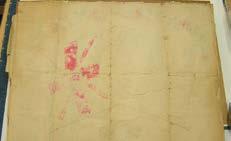
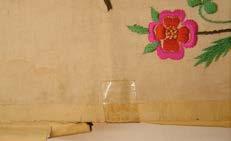
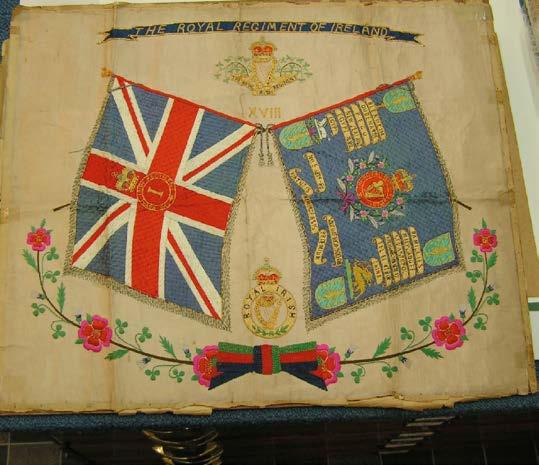
03 Edge with sellotape attached
01 Front
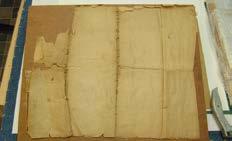
04 Paper with folds
QA curator from a local Regimental Museum brought what appears to be an Indian silk textile that has been backed with paper. It is over 100 years old and they think it was sewn by a relative serving in India with the Army. It has been folded probably for ease of transport or for posting at some time in the past and has developed pronounced folds. The paper is well bonded to the reverse of the silk – see images above.
1. The first image is of the front.
2. The second of the reverse.
3. The third is the edge with sellotape attached. You also see the paper has been folded over the edge, probably to prevent fraying.
4. The final image is a separate piece of paper that is with it, that shows the folds.
At some stage someone else has decided to try and flatten it out and they have attached it to hardboard with sellotape.
We have suggested mounting it in a cotton rag board and framing it with Tru Vue ® Conservation Clear glass as it will provide a high level of UV protection. They want to conserve/preserve it but also want to b. The colour of the paper backing be able to see it framed. The Curator suggests that this may be acidic and also suggested it might be possible to as such one should consider either be ironed. They are price conscious its removal or de-acidicaction. but are aware it could be in the range If removal is possible then this should of £300 or more to have it done. be replaced with either fine polyester monofilament thread or perhaps
AThe silk looks to be an iron-on violine. Removal would be interesting item with the Union the preferred option as either of the Flag and the Regiment’s battle two methods mentioned will provide honours which might give a clue to strength and support. See reasons its age which I suspect to be 20th above. Sellotape etc should also be or more likely 19th century; but of removed and any residue removed. course it is valuable in terms of both Regimental history and sentiment. c.Should a conservator carry out the Whilst it is difficult to assess through above process then the creases/folds pictures alone I would suggest that may be removed to some extent if the first point that comes to mind not completely. is that a conservator should be approached/involved for the following reasons: If a conservator is involved then remember that if you offer to provide that service then you are a.A general assessment of responsible – it is often better condition e.g. are there any signs to let the customer deal with of degradation? – many silks from the conservator directly thereby the 19th/20th century may well absolving you of any responsibility. exhibit signs of degradation due to the weighting of the silk which was As far as framing is concerned you commonplace in this period. might like to consider the following – This causes the silk to be susceptible this is at FATG Museum level unless to both acids and alkalies, a conservation quality undermount temperature/humidity, heat and is used: light. As a result, lengthways splits and cracks may occur along folds and creases. In such cases handling should be kept to a minimum. a.Support. You may well be able to use normal ‘T-hinges’. I have used these previously on items such as this (some silks, batiks etc) and it has worked well but remember to use cotton museum tape (Arqadia ref: 999000031).
b. You are right to consider the use of Cotton museum board – Timecare ® Heritage Board is the best option. I would use the unbuffered board as protein-based fabrics are tolerant to slightly acidic conditions rather than those alkaline conditions provided by buffered board. I would also use the same board as an undermount but, if not, ensure that any undermount is of conservation quality and at least 1100 microns thick. You may well decide to use a sheet of Melinex ® or RIBS foil between the backboard and undermount.
c.Glass/Acrylic should also have a UV Protection factor of at least 97% and hence the Tru Vue ® Con Clear falls well within that bracket.
d. Finally, if any slips are used or the moulding comes in contact with the fabric then these should be sealed.
QAlthough I benefit from a successful business, I often wonder if I should be using tools such as Facebook and Twitter to further promote the services we offer. I have a minimal knowledge of using the platforms on a personal level, but no idea where to begin for my business.
AUsed wisely, platforms such as Facebook, Twitter and Google+ can build your customer base and grow your customer loyalty. However, there are a few golden rules to using social media as a marketing tool.
Firstly, remember that social media is a two-way street. If you’re talking, expect people to talk back – so you must be prepared to listen and respond. Say something relevant and interesting and people will engage with you even more. Social media is a commitment; be prepared to maintain your online presence or you’ll find you lose your audience’s hard-won interest and loyalty very quickly indeed.
Secondly, maintain a good structure for your posts – regular, varied, and always on-brand messages. Your social media campaign should be like a shop window for your business. Think about how you want your customers to perceive you and build a plan of regular content around it. Social media users react well to a mix of rich content, so think about including lots of photosets or videos to stimulate reaction.
Finally, don’t forget the whole point of social media is to communicate. Be aware of not only what you are doing, but what your customers and local community are doing also. Search for local contacts who are using social media already and connect with them. Support them by re-posting their collateral, engaging in their online conversations and exploring joint ventures with local organisations and the art community.
Dates for your diary
Birmingham Museum, Birmingham
15th July 2013 – 31st December 2014
The Staffordshire Hoard
Made up of over 1,500 pieces of beautifully crafted gold and silver from the 7th century Anglo-Saxon kingdom of Mercia, this exhibition tells the story of the hoard and the history of Anglo-Saxon Britain.
Irish Museum of Modern Art, Dublin
12 October 2013 – February 2014
In The Line of Beauty
In the Line of Beauty presents the work of some of Ireland’s most exciting and innovative artists – David Beattie, Oisín Byrne, Rhona Byrne, Aleana Egan, Fiona Hallinan and many more. The exhibition examines artists’ embrace of the beauty of objects, as well as their awareness of the ways in which beauty and materiality can transform experiences.
Hunterian Art Gallery, Glasgow
13th September 2013 – 5th January 2014
Allan Ramsay
This exhibition marks 300 years since the birth of Allan Ramsay (1713 – 1784), whose elegant style set him apart from other portraitists of the time. It includes key loans from UK public and private collections and new research examining the intellectual context in which Ramsay painted a number of his most important portraits.
World Museum Liverpool, Liverpool
18th October 2013 – 2nd March 2014
Magic Worlds
Magic Worlds explores ethereal realms of fairies, folklore, wizards and witches and contains more than 150 objects, including Harry Potter’s broomstick, Sooty and his wand and the Cottingley fairy photographs.
Royal Academy of Arts, London
21st September – 8th December 2013
Australia
Marking the first major survey of Australian art in the UK for 50 years, this exhibition will span more than 200 years from 1800 to the present day and seeks to uncover the fascinating social and cultural evolution of a nation through its art. Two hundred works including painting, drawing, photography, watercolours and multimedia will shed light on a period of rapid and intense change.

Hatton Gallery, Newcastle
21st September – 21st December 2013
Art of the 1960s
This collection of 1960s artworks, which coincide with the building of Victor Pasmore’s Apollo Pavilion in Peterlee, have been selected from the Hatton Gallery’s collection. It will feature work by Victor Pasmore, Eduardo Paolozzi, Richard Hamilton and Alan Davie.
Plymouth City Museum and Art Gallery, Plymouth
26th October 2013 – 15th January 2014
Hidden in Plain Sight
The term ‘abstract’ can mean many things – to remove, to summarise, to be difficult to understand, or to be impersonal. It can refer to art that has an object or landscape as its subject or starting point, or it can use forms that have no source from the visible world. This exhibition will focus on abstraction from the Plymouth City Museum’s own collection, and will include work by Patrick Heron, Ian Davenport, and Justin Knowles.
Did you know..?
28th December is regarded as the unluckiest day of the year.
The glass you choose reflects on you.
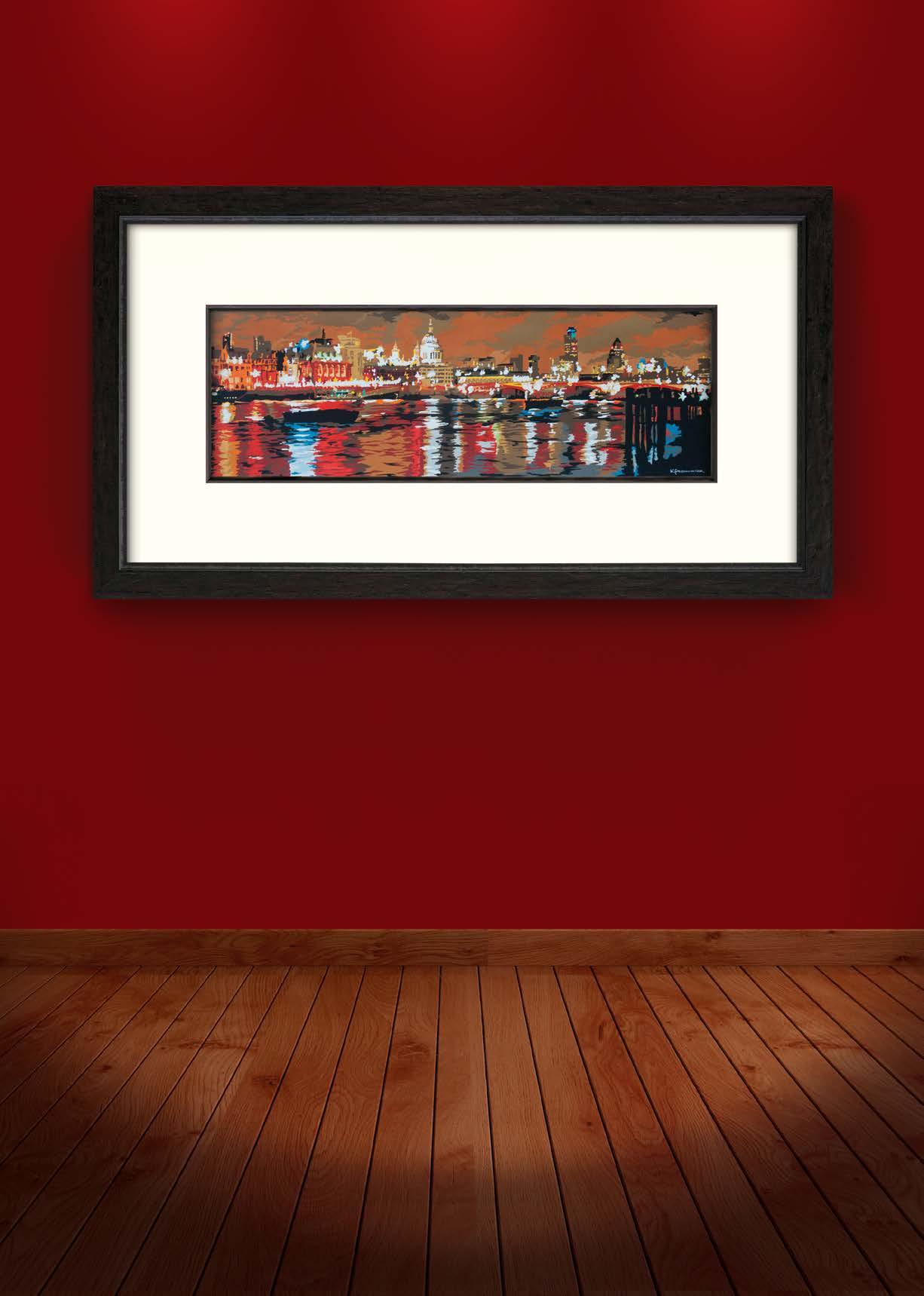
Clarity AR70 by Larson Juhl. A non-glare picture glass that reduces reflections to less than 1% meaning artwork is viewed as intended, true in colour and minus distortions.
To find out more, visit www.arqadia.co.uk/clarity




